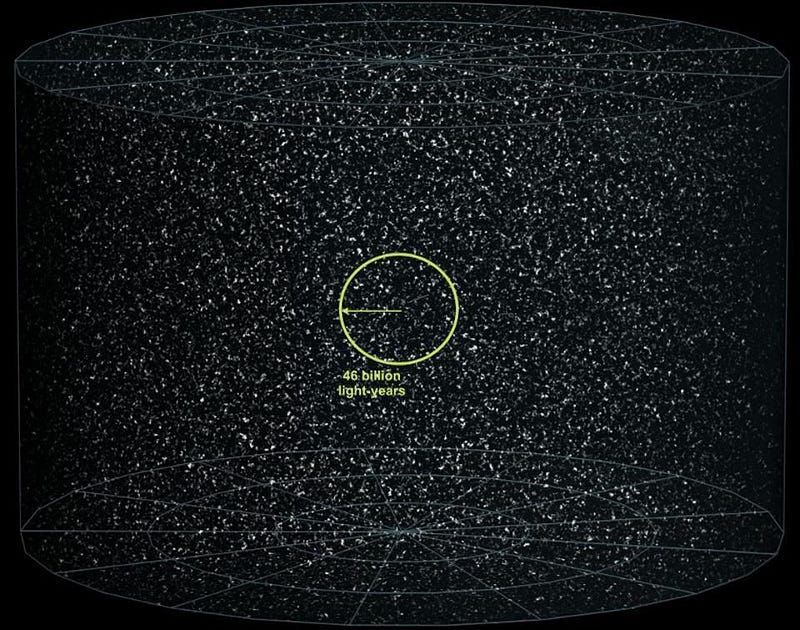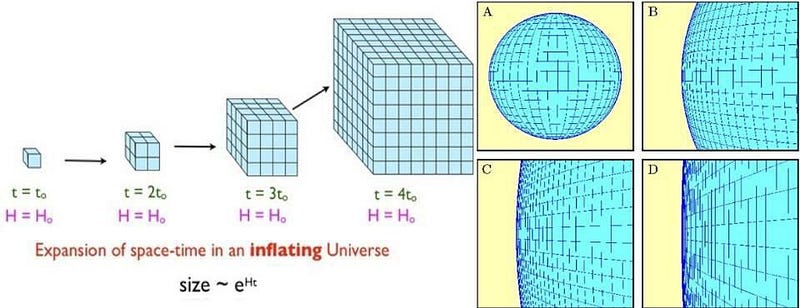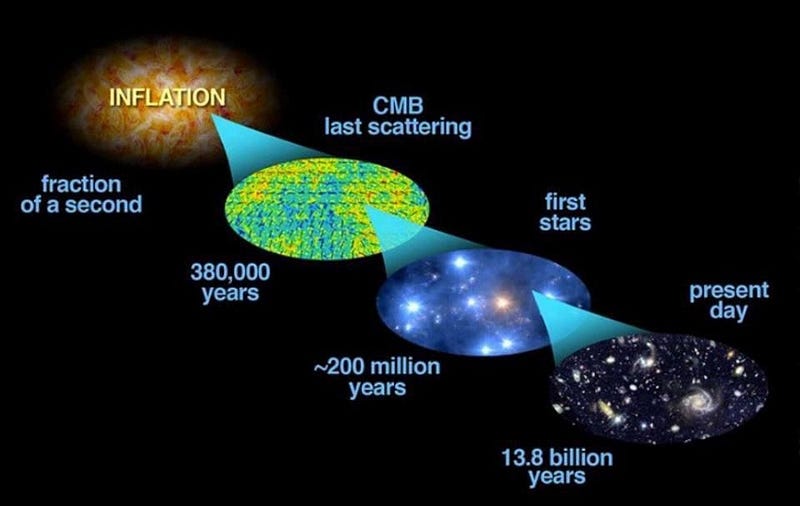“We are all agreed that your theory is crazy. The question that divides us is whether it is crazy enough to have a chance of being correct.” Niels Bohr spoke these words to Wolfgang Pauli about the latter’s theory of elementary particles, but it could just as easily apply to many of today’s most controversial modern physics ideas.
One that’s gotten a lot of attention recently is that of a Multiverse. In short, it’s the idea that our Universe, and all that’s contained within it, is just one small region of a larger existence that includes many similar, and possibly many different, Universes like our own. On the one hand, if our current theories of physics are true, the Multiverse absolutely must exist. But on the other hand, as Sabine Hossenfelder rightly points out, it’s unlikely to teach us anything useful.
The observable Universe might be 46 billion light years in all directions from our point of view, but there’s certainly more, unobservable Universe, perhaps even an infinite amount, just like ours beyond that. Image credit: Frédéric MICHEL and Andrew Z. Colvin, annotated by E. Siegel.
Why must the Multiverse exist? Quite simply: there must be more Universe than the part that is observable to us. If you look just at the portion of the Universe we can see, you can measure its spatial curvature, and find that it’s incredibly close to flat. No regions repeat; no locations connect or loop back on one another; no large-curvature regions show themselves on a scale approaching that of the Universe we can observe.
If the Universe were a hypersphere, the four-dimensional analogue of a sphere, it must have a radius of curvature hundreds of times the size of what we can observe. There must be more Universe out there than what we can access.
Inflation causes space to expand exponentially, which can very quickly result in any pre-existing curved space appearing flat. If the Universe is curved, it has a radius of curvature hundreds of times larger than what we can observe. Image credit: E. Siegel (L); Ned Wright’s cosmology tutorial (R).
But this isn’t just a conclusion from observations; it’s the same conclusion that we’d draw from our leading theory of the Universe’s origin: cosmological inflation. Prior to the hot Big Bang, the fabric of the Universe was expanding at an exponential rate, where every 10–35seconds or so, it would double in scale in all dimensions. Inflation went on for at least as long as 10–33 seconds or so, but could have lasted far longer: seconds, years, millennia, trillions of years or an arbitrarily long length of time.
When inflation ends, the Universe we’re left with is stretched flat, the same temperature everywhere, and far, far vaster than anything we can ever hope to observe. Considering the finite nature of all we can see, inflation is the natural way to create a Multiverse of possibilities.
When inflation ends, the Universe we’re left with is stretched flat, the same temperature everywhere, and far, far vaster than anything we can ever hope to observe. Considering the finite nature of all we can see, inflation is the natural way to create a Multiverse of possibilities.
Inflation set up the hot Big Bang and gave rise to the observable Universe we have access to, but we can only measure the last tiny fraction of a second of inflation’s impact on our Universe. Image credit: Bock et al. (2006, astro-ph/0604101); modifications by E. Siegel.
Without a solid knowledge of how inflation began, or if it ever had a beginning, we cannot know how much “Multiverse” there is out there beyond our actual Universe. But based on the properties of inflation that imprint themselves on the Universe we inhabit, we can draw a few conclusions about it. In particular:
- · The lack of spatial curvature,
- · The adiabatic nature and spectrum of fluctuations imprinted on the cosmic microwave background,
- · The magnitude of imperfections that gave rise to the large-scale structure we see,
- · The constraints on the gravitational waves inflation could have created,
- · And the super-horizon fluctuations that we observe (on scales larger than the visible Universe),
all give us some important constraints on the type of inflation that occurred, and teach us two very important lessons, if the implications of these verified and validated theories are correct, about our Multiverse.
Read more here.




